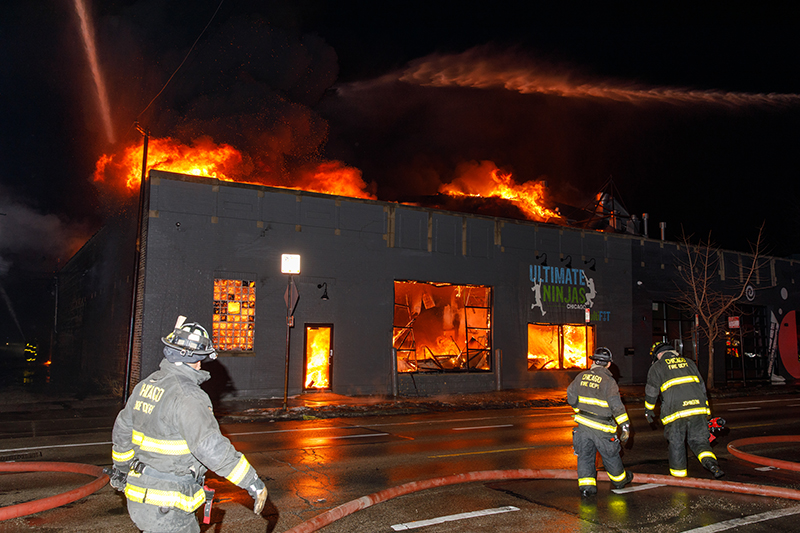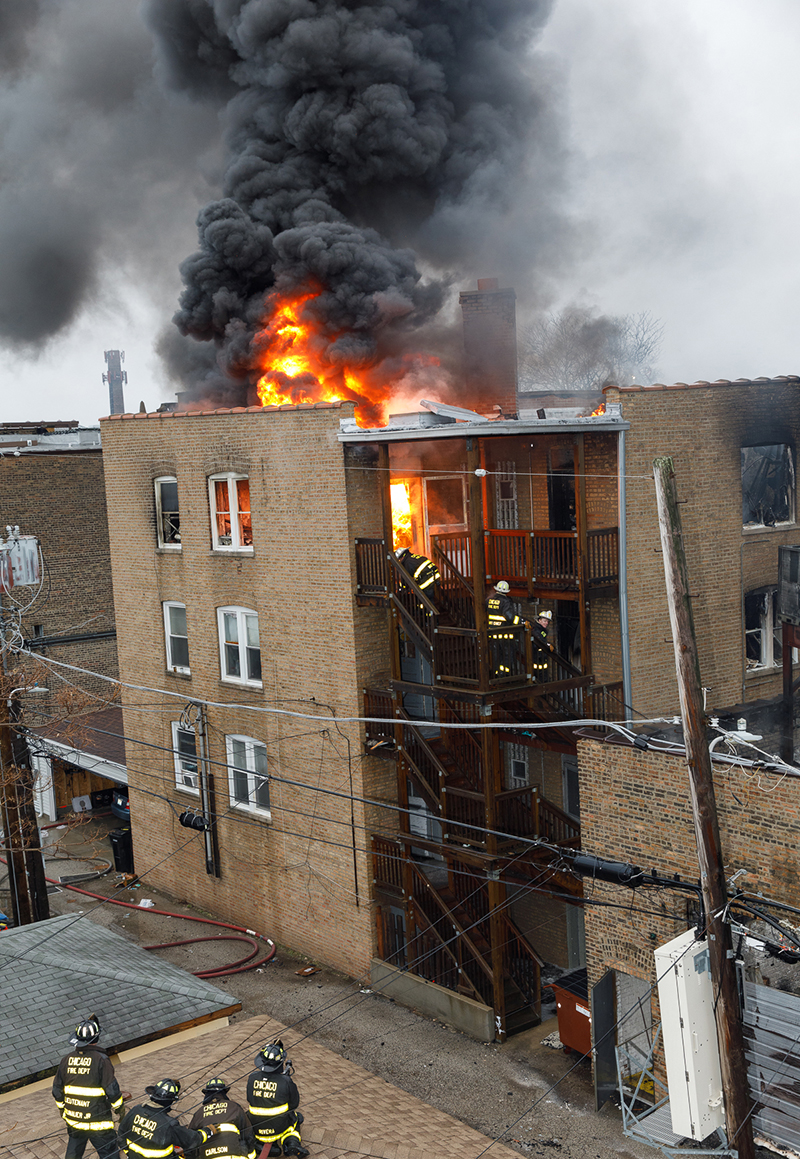FIRE FOCUS ❘ By Michael M. Dugan
Urban renewal and gentrification of cities throughout the world have been going on for years. Developers and corporations are investing and making money on renovated buildings. The Chicago (IL) Fire Department (CFD) had a fire in such a building. The building was by a gym and a small bar and restaurant. At about 3:30 a.m., the CFD received a call for smoke from a building and on arrival had a confirmed fire in a rehabilitated building. The fire was in the ceiling area of a one-story building of ordinary construction, and the fire had significant headway before CFD arrival. The weather conditions were temperatures in the low 30s with winds affecting the smoke and heat movement. This would be a major factor in fire extension into an exposure.
- Firefighters and Construction: Bowstring/Arched Rib Truss Roof Systems
- Training Minutes: Bowstring Truss Roofs
- Construction Concerns for Firefighters: Trusses
The fire quickly progressed, and the fire building was becoming fully involved. The building was wooden bowstring truss construction. As we have learned from Collapse of Burning Buildings by Fire Department of New York Deputy Chief (Ret.) Vincent Dunn and Building Construction for the Fire Service by Frank Brannigan, these buildings are dangerous. Brannigan said, “The building is your enemy,” and he is right. The walls can be forced out by the failure and collapse of the trusses. The bowstring trusses usually fail on the short side of the building opposite the run of the truss.
The photos show the brick wall has been pushed out and the resulting extensive damage to the parked vehicles. The characteristic hump of the old-school bowstring truss is visible. This should be known to every firefighter on the scene so members will operate outside of the potential collapse zone.

(1) A CFD snorkel operates on heavy fire through the roof of a renovated bowstring truss building. (Photos by Gordon Nord Jr.)

(2) Members prepare to set up a master stream device to attack a large volume of fire in a renovated building. Set up the device outside of the collapse zone, when possible.

(3) The failure of the bowstring truss caused the wall to be pushed out with explosive force, as can be seen from the debris.

(4) The exposed building immediately adjacent to the original fire building was impacted by the large volume of fire and the prevailing wind. You are going to need more resources for this building.
A good building size-up is vital, and if any member sees anything that might impact firefighter safety and operations, he should immediately pass it up the chain of command, and all members operating or responding should be made aware of any potential issues with the building. Do not overlook the other important factor: the preplanning and unit awareness of potential hazards. This is important, and the information gathered should be shared with all units that might respond and entered in the building’s dispatch information.
The other issue will be roof operations. If the truss space is involved in significant fire and spread, members should not be allowed to operate on the roof. This can be dangerous, as history has taught us (see the Waldbaum’s fire in Brooklyn, New York, on August 2, 1978, and the following links: https://www.cdc.gov/niosh/fire/reports/face201115.html, https://www.cdc.gov/niosh/fire/reports/face9805.html, and https://www.cdc.gov/niosh/fire/reports/face200921.html).
There also specific guidelines for operations and escape off a bowstring truss roof in an emergency. If you are on the roof and a collapse or failure occurs then, against your instinct, run lengthwise on the roof. This will take you to the next truss, which, depending on the roof size, is usually closer than the safety of the side wall. This, of course, depends on your location on the roof.
The original fire building was one story, and the exposure was three stories and directly adjacent to the fire building. The prevailing wind was blowing toward the exposure, increasing the potential fire spread. In photos 5 and 6, heavy fire did, in fact, impact the exposure. Members tried an aggressive attack but were driven back by the wind and fire conditions. Outside streams were used to knock down the fire and gain control of the fire in the exposure.

(5) Note the damaged trusses; the entire roof is gone.

(6) The original fire building is on the lower right-hand side and the large amount of fire extension, which involved the exposure, is visible.

(7) The damage caused by the advanced fire with a significant head start in a rehabilitated building. You are going to need a lot of help.
A lesson learned at this fire was that the knowledge of the buildings in your response area and basic preplans can help, but it is also helpful to preplan exposures for a large volume of fire on arrival. Also, knowing where to deploy incoming resources and firefighters can help limit fire spread. Strong work was done by the CFD under difficult conditions.
Michael M. Dugan is a captain (ret.) and a 27-year veteran of the Fire Department of New York. He received the James Gordon Bennett medal in 1992 and the Harry M. Archer Medal in 1993. He is also a former volunteer firefighter in the Halesite (NY) Fire Department and the recipient of the FDIC 2021 Lifetime Achievement Award.

